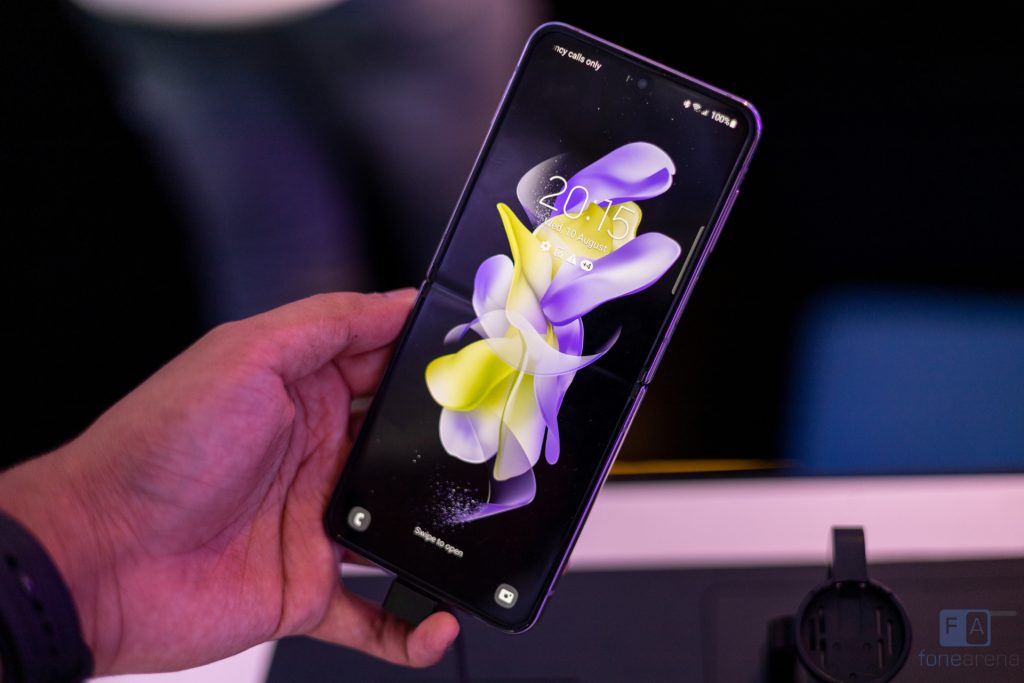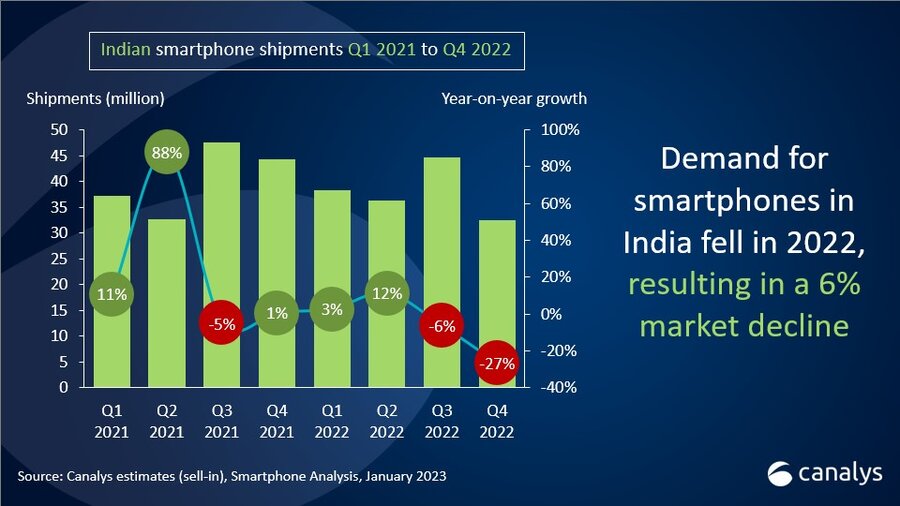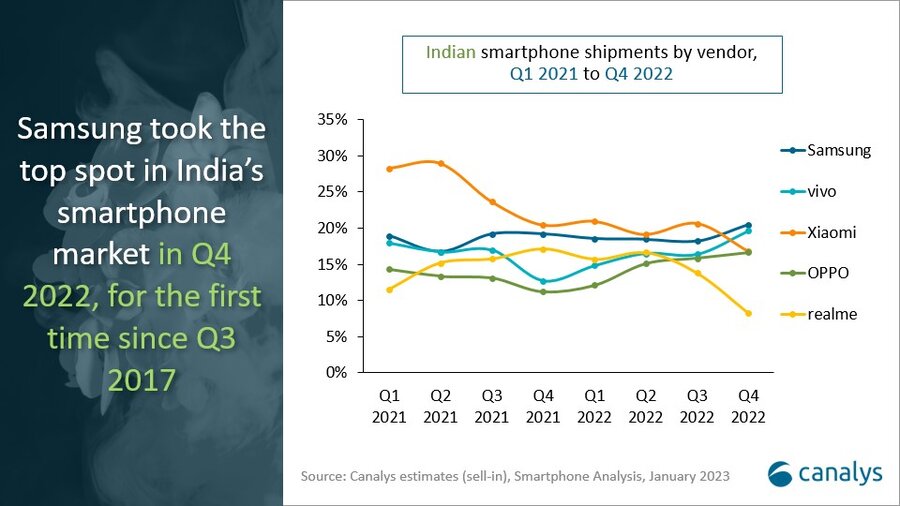
According to Canalys research, India’s smartphone shipments decreased to 151.6 million units in 2022, a 6% decline from the previous year. The decline was attributed to supply issues and low demand caused by global economic challenges at the start of the year.
Canalys reported that the global smartphone market fell by 17% year-over-year in Q4 2022. Additionally, the Indian smartphone market experienced a historic drop in shipments during the fourth-quarter holiday period, declining by 27% to 32.4 million units.
Indian smartphone market in Q4 2022
In Q4 2022, Samsung became the top smartphone brand, shipping 6.7 million units and holding 21% market share. Vivo came in second place with 6.4 million units, mainly through offline channels. Xiaomi, the previous leader for 20 consecutive quarters, fell to third place with 5.5 million units shipped.
However, for the full year of 2022, Xiaomi was still the number one brand. OPPO and Realme maintained their fourth and fifth place positions, respectively, with shipments of 5.4 million and 2.7 million units.

Indian Smartphone market in 2023
The Canalys report suggests that India’s long-term potential for smartphone market growth remains, despite the challenges faced in 2022. The Indian economy was affected by the global economic slowdown at the end of 2022 and the economic indicators suggest a sluggish performance in the short term.


However, with the general election in 2024, the government’s strategy is expected to boost consumer purchasing power. The mass-market segment is vital for smartphone vendors, and the growth will depend on various macroeconomic factors. Canalys predicts moderate growth in the Indian smartphone market in 2023, driven by replacement cycle of 5G devices, state government deals, increased smartphone penetration, and new use cases.
According to Sanyam Chaurasia, an Analyst at Canalys,
India was better positioned to weather the global downturn than other markets. But domestic consumer spending cooled in the last few months of 2022. Even during the festive season, the domestic market suffered a fall in transactions, retail spending and electronic imports.
In 2022, consumers already had up-to-date technology that they had bought during the pandemic, thereby delaying further purchases. This led to smartphone brands struggling with inventory management because demand was subdued. Vendor channel management strategies became more important than ever. The mid-to-high-end segment performed well this year, which will further catalyze the upgrade cycle.
